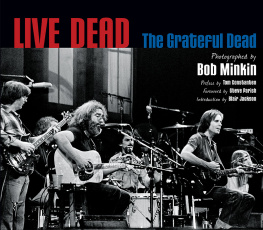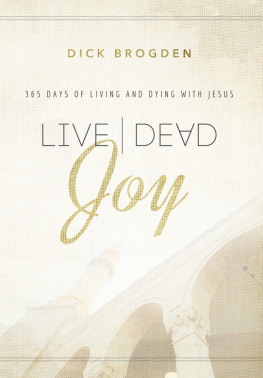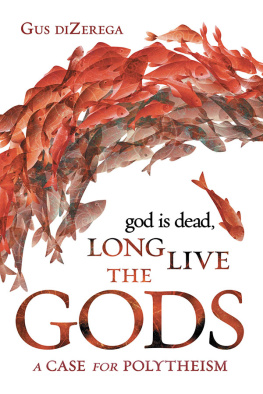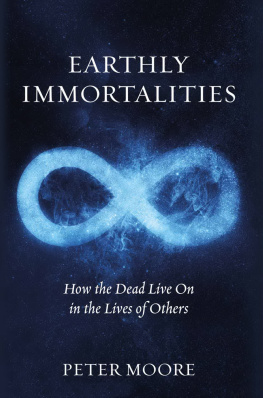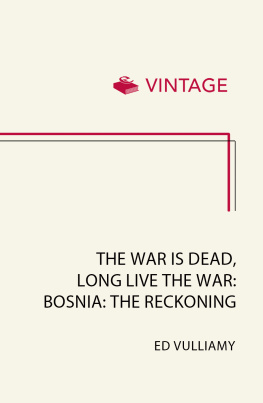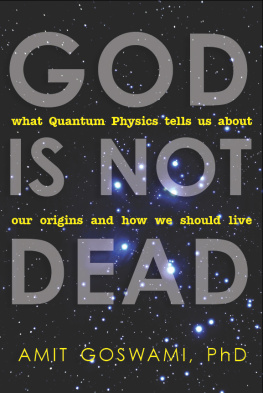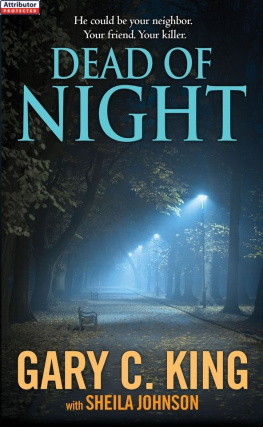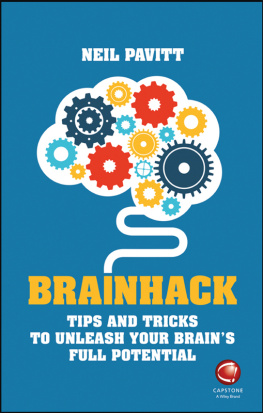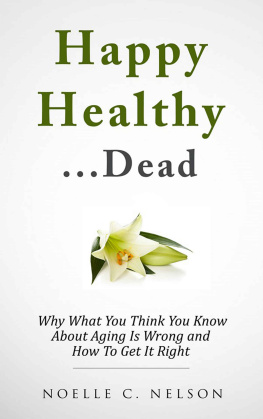Minkin Bob - Live Dead
Here you can read online Minkin Bob - Live Dead full text of the book (entire story) in english for free. Download pdf and epub, get meaning, cover and reviews about this ebook. year: 2014, publisher: Insight Editions LLC, genre: Non-fiction. Description of the work, (preface) as well as reviews are available. Best literature library LitArk.com created for fans of good reading and offers a wide selection of genres:
Romance novel
Science fiction
Adventure
Detective
Science
History
Home and family
Prose
Art
Politics
Computer
Non-fiction
Religion
Business
Children
Humor
Choose a favorite category and find really read worthwhile books. Enjoy immersion in the world of imagination, feel the emotions of the characters or learn something new for yourself, make an fascinating discovery.
- Book:Live Dead
- Author:
- Publisher:Insight Editions LLC
- Genre:
- Year:2014
- Rating:4 / 5
- Favourites:Add to favourites
- Your mark:
- 80
- 1
- 2
- 3
- 4
- 5
Live Dead: summary, description and annotation
We offer to read an annotation, description, summary or preface (depends on what the author of the book "Live Dead" wrote himself). If you haven't found the necessary information about the book — write in the comments, we will try to find it.
Live Dead — read online for free the complete book (whole text) full work
Below is the text of the book, divided by pages. System saving the place of the last page read, allows you to conveniently read the book "Live Dead" online for free, without having to search again every time where you left off. Put a bookmark, and you can go to the page where you finished reading at any time.
Font size:
Interval:
Bookmark:
LIVE DEAD
LIVE DEAD
The Grateful Dead Photographed byBob Minkin
The Grateful Dead Photographed byBob Minkin
Preface by Tom ConstantenForeword by Steve ParishIntroduction by Blair Jackson
San Rafael, California
nFor Anne, Hayley, and Miles And for my father, Louis Minkin 19332014 Live Dead is dedicated to the memory of Jerry Garcia.
n
Contents
Preface by Tom Constanten4Foreword by Steve Parish6Introduction by Blair Jackson8
1970s201980s641990s146The Music Never Stopped194
Acknowledgments222
Preface by Tom Constanten
Passengers on a VoyageThe finest and most treasured photographs transport us to other places and times. They evoke memories of places we remember having been, or else dream of having been.Many among us were at the performances featured here, but few of us ever got this close to the performers. And how close Bob Minkin got! These shots show the guys more clearly than I saw them when I was seated at the organ across the stage.That was quite an eruption of creativity that occurred in San Francisco in the 1960s. All of us who were there knew that something special was happening. Before long we realized we were passengers on a voyage that was bigger than all of us. Even Jerry Garcia was awed by the way things were developing.
The Fillmore and Avalon were breeding grounds for a movement that arose organically and grew rapidly. Suddenly, it seemed, there was a host of amazing bands. The Grateful Dead, of course, but also the Airplane, Big Brother, Quicksilver, Country Joe, Its a Beautiful Day, Sopwith Camel... the list goes on. All part of an extended family.None of us took a test or submitted a resume to join this circus, though many of us traveled many a mile. Janis migrated from Texas, Jorma and Jack from D.C., I made the trek from the Jersey Shore by way of Las Vegas. Then the tides turned, and the bands did some traveling!Go ahead and put on some music to listen to while you peruse these pages. I dont need to. I just look at the pictures and I hear the music as if it never stopped.
(above) Tom Constanten, Fantasy Studios, Berkeley, CA, July 1991; (opposite) Jerry Garcia, NY Hilton, NYC, January 9, 1979
Foreword by Steve Parish
Penetrating the WallI first came out to San Francisco from New York when I was eighteen, and I lived at 70 Brady Alley, right across from PHRPacific High Recordingwhere the Dead would sometimes work. I was staying there with some friends, all of us crashing at this one apartment. Id go out front and smoke Camel cigarettes, and one day I noticed there were some guys across the way loading some equipment out of a truck into PHRRamrod, chief of the Deads then-small equipment crew, Rex Jackson, and John Hagen. They were struggling with a bass cabinet, so I helped them out. By the fall of that year1968I started going to a few shows at the Fillmore West, and thats when Ramrod and I started to get to know each other. Id helped him unload the truck that day, and he remembered.Around that time, I stupidly took some LSD from San Francisco back to New York and got busted for selling it, so that hung me up in New York for some time. While I was there, though, I started working at theaters in New Yorklike the Fillmore Eastthrough a friend of mine who had connections. So when the Grateful Dead would come to New York and play at the Fillmore East or the Pavilion in Queens, Ramrod and I would hang out, and I also got to know the other guys on the crew. Then, when I got off probation at the end of 69, I went back out to California. In those days you could fly standby coast-to-coast really cheap, so I used to go back and forth; I was sort of bi-coastal for a while. Eventually, though, I made up my mind that I wanted to stay on the West Coast and work for the Dead.Now, in terms of photography, the Fillmore East was very strict about who could shootif you didnt have a photo pass or you werent famous, no photography. It was a little looser at the Fillmore West, but there were still rules, or guidelines. I remember in early 1970, when I was still this novice guy helping out on the crew, we were doing a show at the Fillmore West and this photographer jumps up on a Leslie organ speaker and starts taking pictures of the band. So I instinctively grabbed his boot and started pulling him down. I think Jackson might have even said, Get him off of there! The guy might have put up a little bit of a fight, but I was a lot bigger than him, so it was easy to get him down. Then I found it was Jim Marshalland he was famous! But fortunately he didnt have an attitude about it. He knew he was pushing it. He was mad at me for pulling him down, but since no one came to his rescue, he must have figured, Hey, Ive got to listen to this guy, and he never gave me any trouble. Around that time, we were still sort of forming up the crew, and at one point we had a meeting because it was getting to be a problem with guests on stage. And Jerry said to us, You take care of everything behind the
amps and the stage, and well take care of the music and what we have to do up front. So, to a large degree, it was really left to us to decide a lot of that stuffabout guests backstage and photographers. The band always backed us up. They never questioned us. If we threw someone off, they knew there had to be a reason. Sometimes it was even their friends, and there were a few times when we probably wouldnt have done it if wed known who they were. I remember the first time Joe Smith, president of Warner Bros., the Deads label, came to a show I was working and I said to Jerry, Hey, theres a guy from Warner Bros. who wants to come up here. And Jerry said, Fuck him! Fuck Warner Bros.! So I went over to Joe and said, Fuck you, get out of here! Later on he wrote in his book that we always threw him off the stage and we dosed him on acidI think he might have elaborated on that last part a little bit. I didnt dose him, anyway. But if someone really got to be a nuisance onstage, you had to deal with it, one way or another. The stage was our turf.Some of our attitude about photographers in the old days came from Owsleysoundman and acid alchemist. We had him traveling with us a lot and he was completely paranoid about us being photographed. It was like that old-time Mafia thing: Hey, that guy took my picture! Get him! But the precautions werent really that ridiculous, because we were always afraid we were going to get busted on the road. We were always smoking pot and usually had other stuff around, and lets face it, some of the people we hung out with were dealers, so there was this clandestine atmosphere and we were really paranoid about cameras. Especially film or video cameras. If someone came up with a video camera, forget about it. Wed literally take it away from themNo video, youve got to get permission. These guys tried to follow us in Europe in 72, and we fought with them every day, because they would still try to film us. There were also TV stations trying to do it, and wed get mad because when a guy has a camera in his hand, hes not looking around and starts stepping on cables and knocking stuff over, and itd piss us off. So we got an attitude about it and wanted to put up a protective wall around our guys.In those days, too, the cameras in the audience were often really annoyingthe flash cameras were totally rude and in the face of the band. Jerry hated it, and I know Bob Weir talked about seeing nothing but purple dots in front of his eyes from the flashes going off. It was getting to be a problem up front with so many cameras, and there were even some people who would jump up on the stage in front and try to take a couple of pictures, or lean on the monitors to take photos and pull plugs out by
(above) Steve Parish, Golden Gate Park, San Francisco, CA, October 3, 2010(opposite) Steve Parish and Jerry Garcia, Frost Amphitheatre, Palo Alto, CA, May 2, 1987
Font size:
Interval:
Bookmark:
Similar books «Live Dead»
Look at similar books to Live Dead. We have selected literature similar in name and meaning in the hope of providing readers with more options to find new, interesting, not yet read works.
Discussion, reviews of the book Live Dead and just readers' own opinions. Leave your comments, write what you think about the work, its meaning or the main characters. Specify what exactly you liked and what you didn't like, and why you think so.

